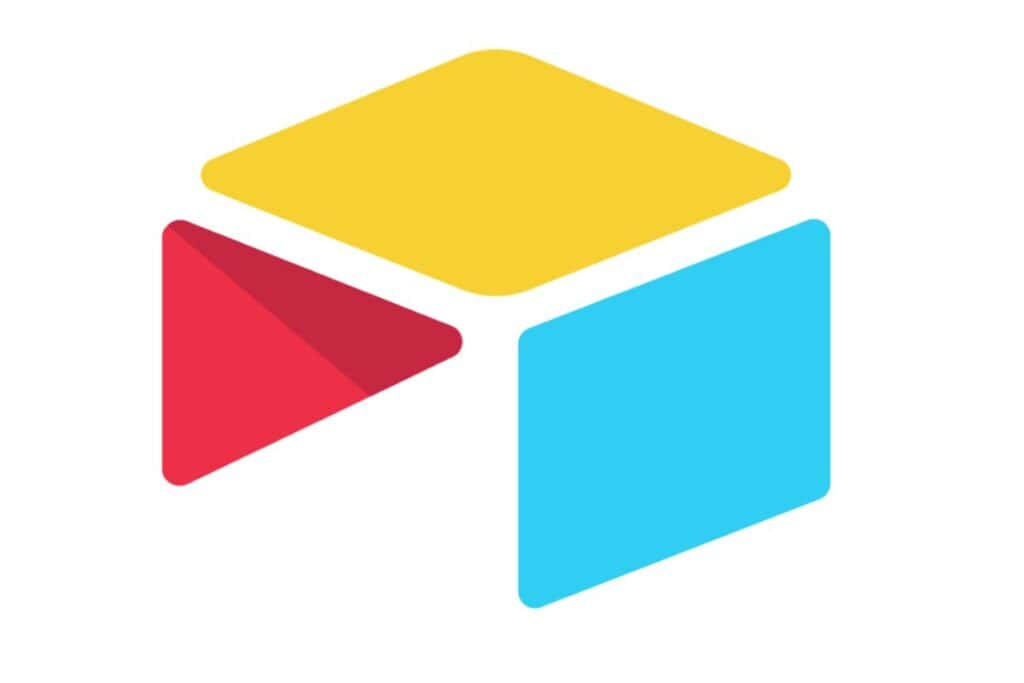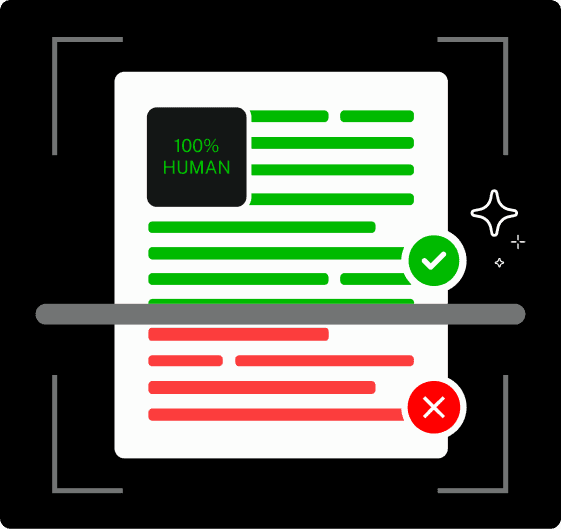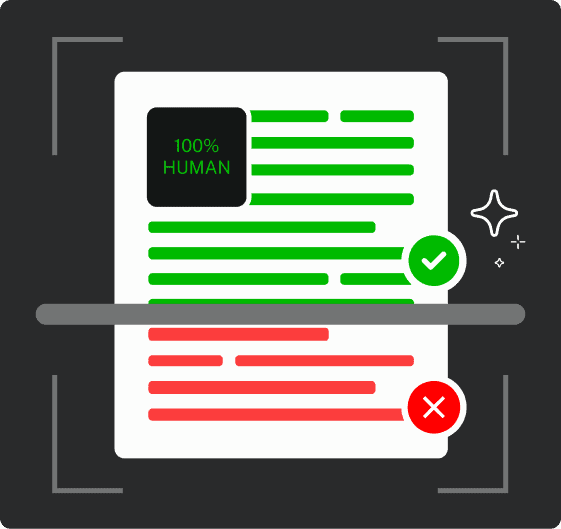Ever hit that point where a spreadsheet was holding you back, but a full database seemed like overkill?
That’s Airtable’s sweet spot.
But if your team uses Airtable to organize content, marketing materials, or customer communications, there’s one thing to keep in mind:
Airtable isn’t built to detect AI-generated content.
In this guide, we’ll walk you through what Airtable is used for, how it fits into modern workflows, and the truth about AI detection inside the platform.
TL: DR – Airtable can help you organize your content, but you’ll need an AI detector to keep the quality of your content up to scratch.
Key Takeaways
- Airtable organizes projects, data, and workflows but lacks AI detection features.
- Poorly optimized AI content in Airtable can hurt SEO and credibility.
- Undetectable AI’s Detector and Humanizer ensure content reads natural and authentic.
- Pairing Airtable with Undetectable AI keeps workflows efficient and content human-like.
What Is Airtable?

Airtable is best described as a hybrid between a spreadsheet and a database.
Think of it like Google Sheets… but on steroids.
With Airtable, you can organize information in rows and columns (just like a spreadsheet), but you can also link records together, create different views, and automate workflows (just like a database).


Never Worry About AI Detecting Your Texts Again. Undetectable AI Can Help You:
- Make your AI assisted writing appear human-like.
- Bypass all major AI detection tools with just one click.
- Use AI safely and confidently in school and work.
Core Features and Functionalities
If you’ve never used Airtable before, here’s a very brief overview of the platform’s core features, with a few real-world business examples thrown in for good measure.
| Airtable: Core Features | |
| Relational Databases | What That Means: You can link records across tables. Example: A single client can be linked to different business processes, like sales, invoicing, and customer service. |
| Multiple Views | What That Means: You can view data as a spreadsheet, Kanban board, calendar, gallery, or timeline. Example: A content development team might plan blogs in Calendar view, then switch to Kanban view to monitor the entire content creation process. |
| Automations | What That Means: You can automate repetitive tasks, like sending emails or generating reports. Example: A sales team could set up an automation that triggers an email to potential clients at different stages of the sales pipeline. |
| Collaboration | What That Means: Your team can work together in real time with comments, @mentions, and permission controls. Example: An account manager can leave feedback directly on a record and tag teammates for quick revisions. |
| Templates | What That Means: You don’t have to build out your own Airtable framework or processes; you can just use the templates and tweak them as you go. Example: Marketing teams can use the Content Marketing Pipeline template for organizing campaigns, blogs, and social media posts. |
| Third Party Integrations | What That Means: You can connect and use Airtable with other apps, like Slack, Gmail, Asana, HubSpot, and MailChimp. Example: A customer success team can sync Airtable with Gmail to track and follow up on client conversations. |
What Is Airtable Used For?
Because Airtable is so flexible, it can be used across different industries and teams, such as:
- Content Development – Marketing and editorial teams can collaborate with copywriters, designers, and project managers throughout the content development process.
- Customer Relationship Management – Sales and support teams can track leads, manage pipelines, resolve issues, and monitor client interactions.
- Product Development – Startups, designers, and product managers can monitor development timelines, map out feature requests, and track bugs.
- Event Planning – Planners and coordinators can keep schedules, vendor details, budgets, and guest lists organized.
- HR and Recruitment – Advisors and recruiters can track job applicants, manage onboarding checklists, and store employee records in one organized system.
Other popular use cases include: inventory management, fundraising, compliance tracking, web development… the possibilities really are endless.
Does Airtable Detect AI?

Airtable does what it’s built to do very well. But it’s not built to detect AI.
Why does this matter?
Because more and more teams have started to lean on AI for content development and client communications.
However, without the right safeguards in place, AI-written content can end up doing more harm to a business than good.
For example, poorly optimized AI content runs the risk of:
- Sounding robotic
- Failing to connect with readers
- Getting flagged by Google as low-quality or spammy
- Hurting search engine rankings

That’s where external tools like Undetectable AI can be a massive help. With Undetectable’s AI Detector and Humanizer, you can:
- Scan any written content (like blogs, sales emails, ad copy, and social media posts) to see if it reads like AI.
- Rewrite the content so it sounds a bit more natural and human.
In short, Airtable can keep everything organized… but you’ll need another tool (like Undetectable AI) to guarantee that every piece of content and customer communication feels authentic.
Using Airtable With AI Tools
So, how can you use Airtable and Undetectable AI together?
Here are some example workflows for content development, marketing, and sales teams.
| How to Use Airtable With Undetectable AI: Sample Workflows | |
| Content Creation Workflow | Use Airtable to create and manage your editorial calendar. When copywriters begin to draft content, use AI SEO Content Writer to quickly generate ideas. Store initial drafts directly in Airtable.Run final drafts through AI Detector and Humanizer to see what may need to be tweaked.Once finalized, tag content managers for final scheduling and publishing. |
| Marketing Campaign Workflow | Plan campaign assets and timelines in Airtable. Use AI Stealth Writer to generate high-quality ad copy, social posts, and emails.Edit drafts to incorporate brand voice and key messaging.Run final drafts through AI Detector and Humanizer to see what may need to be tweaked.Once finalized, tag content managers for final scheduling and publishing. |
| Sales Workflow | Store email templates and outreach sequences in Airtable. Use Stealth Writer to refine templates so they feel natural and personable. Run final drafts through AI Detector and Humanizer to see what may need to be tweaked.Share approved templates with the sales team. |
Limitations of Airtable for AI Detection
Airtable simply wasn’t built to flag AI-generated content.
This creates some challenges for teams that rely heavily on AI for content development, including:
- No AI Detection – Airtable won’t warn you if your content sounds robotic or if it’s likely to be flagged by detection tools.
- No Quality Safeguards – Airtable can store drafts, but it can’t help you refine your tone, style, or readability.
- No SEO Protection – Poorly optimized AI content can slip through unnoticed, risking penalties from search engines.
That is why external AI detection tools are essential.
However, it’s also important to note that not all AI detectors are created equal. Accuracy can vary greatly across platforms, and some detectors are more prone to false positives and false negatives than others.
For example, a study by ZDNet tested 11 AI detection tools and found Undetectable AI to be one of the most accurate AI detection tools available.
Where other platforms struggled, Undetectable AI consistently managed to detect both human-written and AI-written content with 100% accuracy.
Best Practices for Managing AI Content in Airtable
If your team is already using AI to speed up content creation, it’s important to put some quality control measures in place.
Here are a few best practices for managing AI-written content in Airtable:

- Verify original content early. Before uploading your AI-generated drafts into Airtable, run them through an AI Plagiarism Checker to make sure your content is unique and safe from duplication issues (which can harm your SEO efforts).
- Humanize before publishing. Even if AI-generated text passes detection tests, it often lacks the nuance of human writing. Use AI Humanizer to polish tone, add natural flow, and make your text indistinguishable from human content.
- Track revisions in Airtable. Use Airtable’s record history and comments feature to document when content has been AI-generated, verified with an AI detector, and humanized or rewritten.
- Maintain ongoing quality checks. AI tools evolve fast, but so do detection systems. Build in periodic reviews of your content processes and workflows to make sure your content stays human and competitive.
Discover how our AI Detector and Humanizer can help, find them in the widget below!
Frequently Asked Questions
Is Airtable free?
Airtable offers a free plan with its core features and a limited amount of records, storage, and automation runs. If you need more advanced features, paid plans start from $20 per month.
What does Airtable do?
Airtable is a hybrid between a spreadsheet and a database. Its primary purpose is to help teams organize information, track projects, and collaborate with each other.
Final Thoughts

Airtable can do a lot. But what it can’t do is detect AI content.
To get the best of both worlds, you’ll need to pair Airtable with an external AI detection tool (like Undetectable AI).
That way, your workflows stay organized, your content and messaging feels authentic, and your team can move faster than ever without sacrificing your brand’s credibility.
Use Undetectable AI’s Detector and Humanizer to keep your text natural and authentic.
Combine them with the AI Content Writer, Stealth Writer, and Plagiarism Checker to ensure originality and undetectable quality.
With Undetectable AI, you get trusted, human-like content that matches your brand voice every time.
